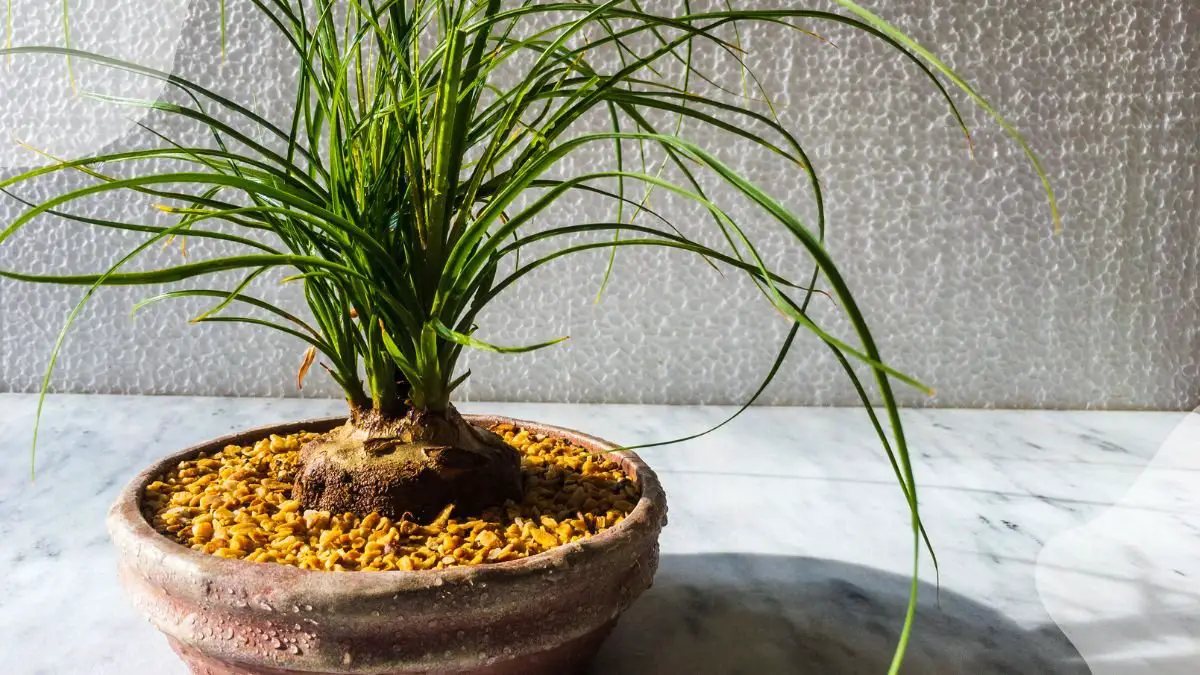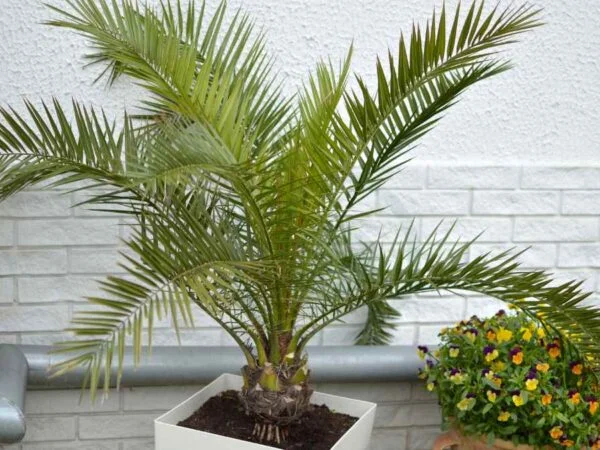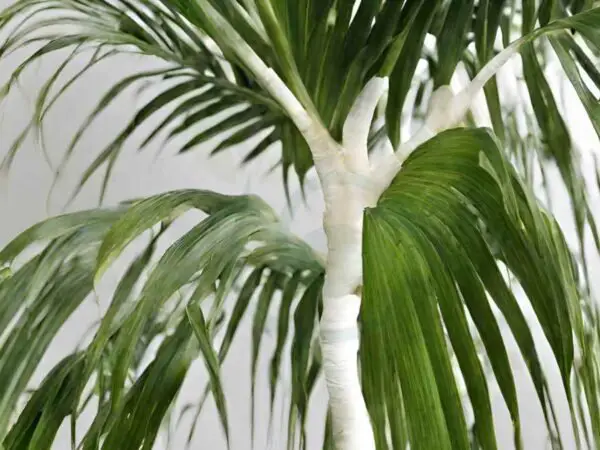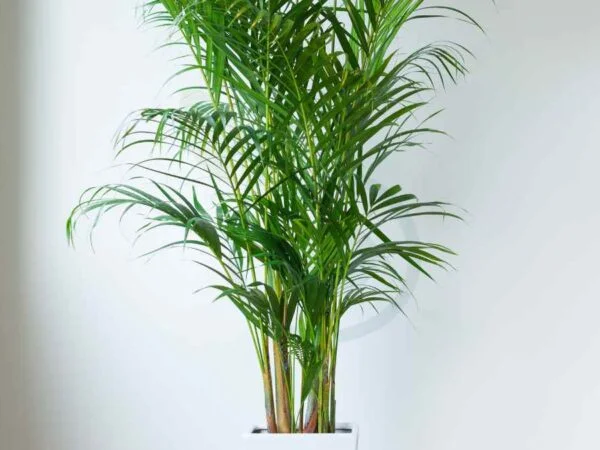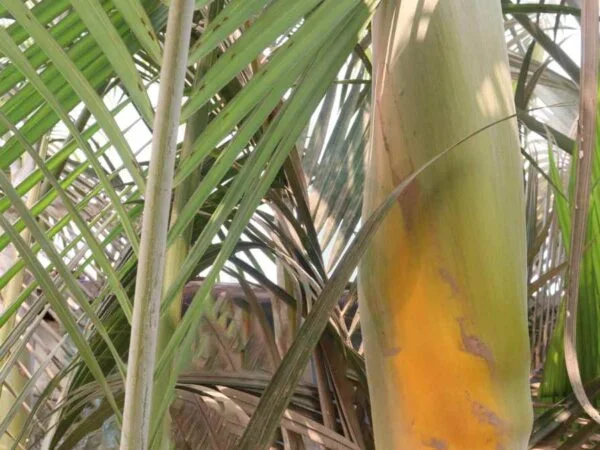Discover the ultimate guide to caring for your ponytail palm plant and other desert plants. From watering tips to sunlight requirements, we've got you covered. Learn how to prevent common issues like overwatering and root rot, ensuring your plant thrives. Find out the best soil mix and ideal temperature conditions for optimal growth. Whether you're a beginner or a seasoned plant parent, this comprehensive care guide will help you nurture your ponytail palm to perfection.
Stay tuned as we delve into the essential care practices that will keep your ponytail palm healthy and vibrant. Say goodbye to wilting leaves and hello to lush greenery with our expert tips and tricks. Get ready to elevate your indoor plant game with our foolproof advice.
Key Takeaways
- **Regularly water your ponytail palm, allowing the soil to dry out between waterings to prevent root rot.
- **Place your ponytail palm in a bright, sunny spot to ensure proper growth and avoid issues like leggy growth.
- **Consider fertilizing your plant sparingly during the growing season to support healthy development.
- **When repotting your ponytail palm, choose a container that is only slightly larger than the current one to prevent overpotting.
- **Experiment with propagation techniques like offsets or seeds to expand your ponytail palm collection.
- **Monitor your plant for common issues like yellowing leaves or pests and take prompt action to address them effectively.
Understanding Ponytail Palms
Basics and Biology
The ponytail palm (Beaucarnea recurvata) is not a true palm but belongs to the Agave family. Native to Mexico, it's characterized by its bulbous trunk, long curly leaves, and resilience to drought conditions.
Ponytail palms are adapted to arid climates, storing water in their swollen base to survive extended periods without water. These plants can grow up to 20 feet tall in their natural habitat.
Ideal Growing Conditions
Ponytail palms thrive in bright, indirect light but can tolerate lower light levels. They prefer well-draining soil, so a cactus or succulent mix works well. Ensure the pot has drainage holes to prevent waterlogging.
To enhance drainage further, consider adding sharp sand or gravel to the soil mix. Water sparingly, allowing the soil to dry out between waterings to prevent root rot.
Common Varieties
- Pigtail Palm: Known for its twisted, curly leaves resembling a pig's tail.
- Bottle Palm: Features a swollen base that tapers into a thinner trunk.
- Elephant's Foot Palm: Recognizable by its thick, bulbous base resembling an elephant's foot.
Each variety of ponytail palm has unique characteristics, from leaf shape to overall size and growth habits. The pigtail palm is popular for its whimsical appearance, while the bottle palm stands out for its distinctive silhouette.
Differentiating between ponytail palm varieties involves examining the shape of the base, leaf curliness, and overall growth pattern. The elephant's foot palm, with its thick base resembling an elephant's foot, is easily distinguishable from other varieties.
Essential Care Tips
Light and Location
Ponytail palms thrive in bright, indirect light and should be placed near a sunny window. Avoid direct sunlight, as it can scorch the plant's leaves. Adjust the plant's position if you notice signs of sunburn or stretching.
When it comes to light exposure, ponytail palms prefer consistency. Rotate the plant occasionally to ensure even growth. If you need to move the plant, do so gradually to prevent shock.
Watering Needs
Water ponytail palms sparingly, allowing the soil to dry out between waterings. A good rule of thumb is to water deeply but infrequently. Overwatering can lead to root rot, causing irreversible damage to the plant.
To prevent overwatering, check the soil moisture level before watering again. Wilting or yellowing leaves can indicate both under and overwatering issues. Adjust your watering schedule accordingly.
Soil and Fertilizing
For optimal growth, plant ponytail palms in well-draining soil with a mix of cactus potting mix and perlite or sand. This combination prevents waterlogging, which can harm the plant's roots.
During the growing season in spring and summer, fertilize the plant monthly with a balanced liquid fertilizer diluted to half strength. Avoid fertilizing during the winter months when growth slows down.
Temperature and Humidity
Ponytail palms thrive in warm temperatures between 65-85°F (18-29°C) but can tolerate slightly cooler conditions. Protect the plant from drafts and sudden temperature fluctuations to prevent stress.
Maintain a moderate humidity level around the plant, especially during winter when indoor air tends to be drier. Mist the leaves occasionally or use a humidifier to increase humidity levels.
Advanced Care Practices
Monthly Care Routine
Creating a monthly care schedule is crucial for maintaining the health of ponytail palms. In the first week, water the plant thoroughly but ensure the soil dries out before the next watering. During the second week, monitor growth by checking for any new leaves or changes in appearance. In the third week, consider fertilizing with a balanced houseplant fertilizer to support healthy growth. Finally, in the fourth week, inspect the plant for any signs of pests or diseases.
Maintaining a consistent care routine is essential for ponytail palms to thrive. By regularly watering, fertilizing, and monitoring growth, you can ensure the plant receives the necessary nutrients and attention for optimal health and development.
Managing Humidity
Humidity levels play a significant role in ponytail palm health. These plants thrive in low to moderate humidity environments. To increase humidity, consider placing a humidifier near the plant or misting its leaves occasionally. On the other hand, if humidity levels are too high, ensure proper ventilation around the plant to prevent moisture buildup.
Creating an optimal humidity environment involves striking a balance between moisture levels in the air. By monitoring humidity levels and making adjustments as needed, you can provide the ideal growing conditions for your ponytail palm.
Optimal Watering Practices
When it comes to watering ponytail palms, it's important to follow best practices to prevent issues like root rot or dehydration. Signs of underwatering include dry, brown tips on the leaves, while signs of overwatering include yellowing leaves and mushy stems. Adjust your watering practices based on factors such as seasonal changes, temperature variations, and plant size.
To maintain optimal hydration levels, water your ponytail palm when the top few inches of soil feel dry to the touch. Avoid letting the plant sit in waterlogged soil, as this can lead to root rot. By understanding your plant's watering needs and observing its response to different conditions, you can ensure it receives the right amount of moisture for healthy growth.
Growth and Development
Hardiness Zones
Ponytail palms, despite their hardy nature, thrive best in warm climates. Understanding hardiness zones is crucial for optimal growth. These zones indicate the temperature range a plant can withstand.
In the United States, ponytail palms flourish in hardiness zones 10 to 12. These regions offer the ideal warmth for the plant's growth. To determine your area's hardiness zone, consult the USDA Plant Hardiness Zone Map.
Growth Patterns
Ponytail palms exhibit slow but steady growth, reaching heights of up to 20 feet over several decades. With age, the plant develops a distinctive swollen trunk resembling an elephant's foot.
Branching is rare in younger plants but becomes more common as they mature or after flowering. New leaves emerge from the top of the plant, adding to its unique appearance. Factors like sunlight exposure and watering frequency significantly impact the plant's growth.
Repotting Guidelines
When to Repot
Ponytail palms should be repotted every 2-3 years or when roots outgrow the current container. Overcrowded roots may lead to stunted growth and poor health. Signs of needing repotting include roots growing out of drainage holes and soil drying out quickly.
To repot ponytail palms, choose a slightly larger pot with good drainage. Gently remove the plant from its current pot, loosen the roots, and place it in the new container with fresh well-draining soil. Water thoroughly after repotting to help the plant adjust.
Repotting offers several benefits such as providing fresh nutrients, preventing root-bound issues, and promoting healthy growth. It allows the plant to establish a strong root system and thrive in a new environment.
Choosing the Right Pot
Selecting the right pot is crucial for the well-being of ponytail palms. Opt for a pot that is only slightly larger than the current one to prevent overpotting. Consider pots made of terracotta or ceramic as they allow better airflow and water evaporation.
When choosing a pot size, ensure it provides ample room for root growth without being excessively large. The pot should have drainage holes to prevent waterlogging, which can cause root rot. Consider the weight of the pot as ponytail palms prefer stability.
Factors like material and drainage holes play a significant role in maintaining proper soil moisture levels. A porous material like terracotta helps regulate moisture better than plastic pots. Adequate drainage is essential to prevent water accumulation at the bottom of the pot.
Propagation Techniques
Division Method
To propagate ponytail palm plants through division, start by selecting a mature plant with multiple stems. Carefully remove the plant from its pot to expose the root system. Using a sharp, sterile knife, divide the plant into sections, ensuring each section has both roots and foliage.
Next, separate the offsets from the main plant, ensuring each offset has its own roots. Trim any damaged or rotting roots before replanting the divisions in well-draining soil. Water the newly divided plants lightly to avoid overwatering and place them in a warm, bright location.
For successful division, ensure that each division has enough roots and foliage to support growth. Avoid dividing the plant too aggressively, as this can stress the ponytail palm. Provide adequate care post-division by maintaining proper watering and light conditions.
Troubleshooting Common Issues
Pest Management
Ponytail palms can be susceptible to common pests such as spider mites, mealybugs, and scale insects. These pests feed on plant sap, leading to yellowing leaves and stunted growth. To tackle these issues, regularly inspect the plant for any signs of infestation.
Implement natural pest management by wiping the leaves with a damp cloth to remove pests physically. Introducing beneficial insects like ladybugs can help control pest populations naturally. For more severe infestations, consider using chemical treatments like neem oil or insecticidal soap. Always follow the instructions carefully to avoid harming the plant.
Prevent pest infestations by maintaining proper plant hygiene. Remove any dead leaves or debris around the plant, as they can attract pests. Avoid overwatering, as it can create a favorable environment for pests to thrive. Lastly, quarantine new plants before introducing them to your ponytail palm to prevent bringing in pests unknowingly.
Disease Prevention
Common diseases that can affect ponytail palms include root rot, leaf spot, and fungal infections. These diseases are often caused by overwatering or poor drainage conditions. To prevent diseases, ensure the plant is placed in well-draining soil and avoid excessive watering.
Preventive measures against diseases involve proper watering practices. Allow the soil to dry out between waterings to prevent root rot and fungal infections. Ensure good air circulation around the plant by avoiding overcrowding with other plants. Regularly inspect the leaves for any signs of discoloration or spots, which could indicate the presence of disease.
Maintain overall plant health by providing adequate sunlight and proper nutrition. Ponytail palms thrive in bright indirect light, so ensure they receive sufficient light exposure. Consider fertilizing the plant sparingly during the growing season to support healthy growth and improve disease resistance.
Seasonal Care Guide
Spring and Summer Care
During spring and summer, ensure your ponytail palm receives adequate sunlight to thrive. Water it more frequently due to the warmer temperatures, but be cautious not to overwater. Optimize growth by fertilizing the plant monthly during these active growing months.
Key Points:
- Place the plant in a sunny spot indoors or outdoors.
- Increase watering frequency but avoid waterlogging.
- Fertilize monthly to support healthy growth.
Fall and Winter Care
As fall approaches, reduce watering frequency as the plant's growth slows down. Position the ponytail palm where it can still receive bright, indirect light during winter. Shield it from cold drafts and temperatures below 50°F to prevent damage.
Key Points:
- Decrease watering as the plant enters dormancy.
- Ensure adequate indirect light exposure in winter.
- Protect the plant from cold drafts and temperatures below 50°F.
Additional Care Tips
Cleaning and Maintenance
Ponytail palms require regular cleaning and maintenance to thrive. Dust and debris can accumulate on the plant's leaves, hindering photosynthesis. Removing dust from the leaves enhances the plant's ability to absorb sunlight efficiently.
To clean your ponytail palm, gently wipe the leaf tips with a damp cloth or sponge. This helps prevent dust buildup and keeps the plant looking fresh. Regularly inspect the plant for any signs of pests or diseases, ensuring a healthy environment for growth.
Maintaining your ponytail palm through regular cleaning and care not only improves its appearance but also promotes overall plant health. By keeping the plant free from dust and debris, you reduce the risk of pest infestations and diseases, leading to a vibrant and thriving ponytail palm.
Monthly Fertilizing Routine
Establishing a monthly fertilizing routine is crucial for the optimal growth of ponytail palms. Use a balanced liquid fertilizer specifically formulated for succulents during the plant's growing season. Apply the fertilizer once a month during spring and summer when the plant is actively growing.
When fertilizing your ponytail palm, ensure to dilute the fertilizer to half or quarter strength to prevent nutrient burn. Adjust the fertilizing routine based on the plant's growth rate; if the plant shows signs of slow growth, consider increasing the frequency of fertilization.
Regular fertilization provides essential nutrients for ponytail palms to thrive. It supports healthy growth, encourages vibrant green foliage, and promotes overall plant vitality. By following a consistent fertilizing routine tailored to your plant's needs, you ensure long-term health and beauty for your ponytail palm.
Closing Thoughts
You now possess a comprehensive understanding of caring for your ponytail palm plant. By following the essential care tips, advanced practices, and seasonal guidelines outlined, you can ensure optimal growth and health for your plant. Remember to monitor its development, repot when necessary, and troubleshoot any issues promptly. Utilize the propagation techniques to expand your plant collection and implement additional care tips for continued success.
Take action today by applying these insights to your ponytail palm plant care routine. Your green companion will thrive under your attentive care, rewarding you with lush foliage and a vibrant presence in your living space.
Frequently Asked Questions
How often should I water my ponytail palm plant?
Water your ponytail palm plant thoroughly, allowing the soil to dry out between waterings. In general, aim to water every 2-3 weeks during the growing season and reduce frequency during winter months to prevent overwatering.
What kind of light does a ponytail palm plant need?
Ponytail palm plants thrive in bright, indirect light. Place your plant near a window where it can receive plenty of sunlight throughout the day. Avoid direct sunlight as it can scorch the leaves.
How do I propagate a ponytail palm plant?
Propagate your ponytail palm plant through offsets or seeds. To propagate using offsets, remove the baby shoots from the base of the parent plant and replant them in a well-draining soil mix. For seed propagation, sow fresh seeds in a suitable potting mix.
Why are the leaves of my ponytail palm turning brown?
Brown leaves on a ponytail palm can be due to overwatering, underwatering, or excessive sunlight exposure. Check the moisture levels in the soil, adjust your watering schedule, and move the plant to a spot with less direct sunlight to help prevent further browning.
When should I repot my ponytail palm plant?
Repot your ponytail palm plant every 2-3 years or when you notice its roots becoming pot-bound. Choose a slightly larger container with good drainage, use a well-draining soil mix, and gently loosen the roots before placing the plant in its new pot.
Image Source: Paid image from CANVA

